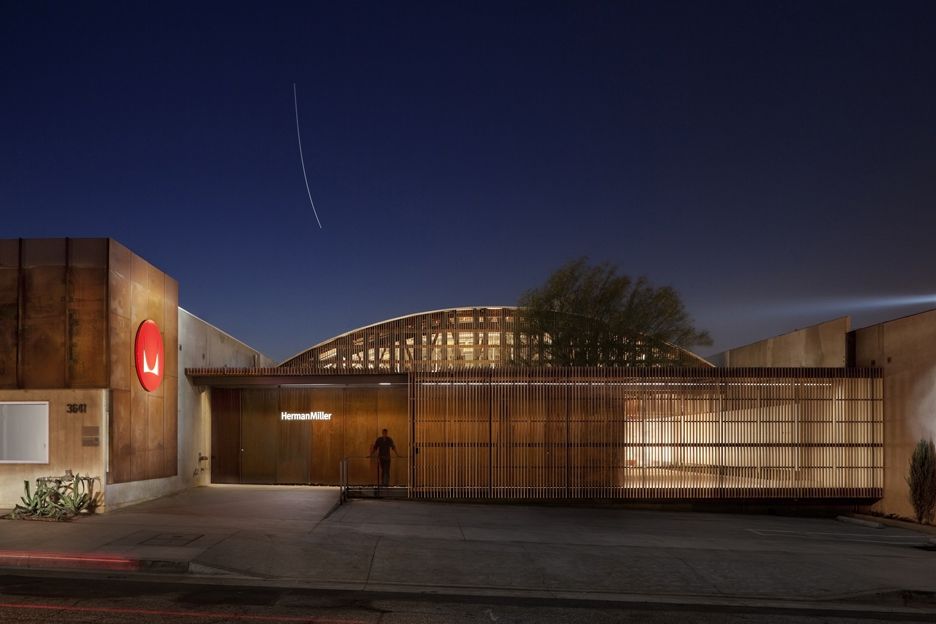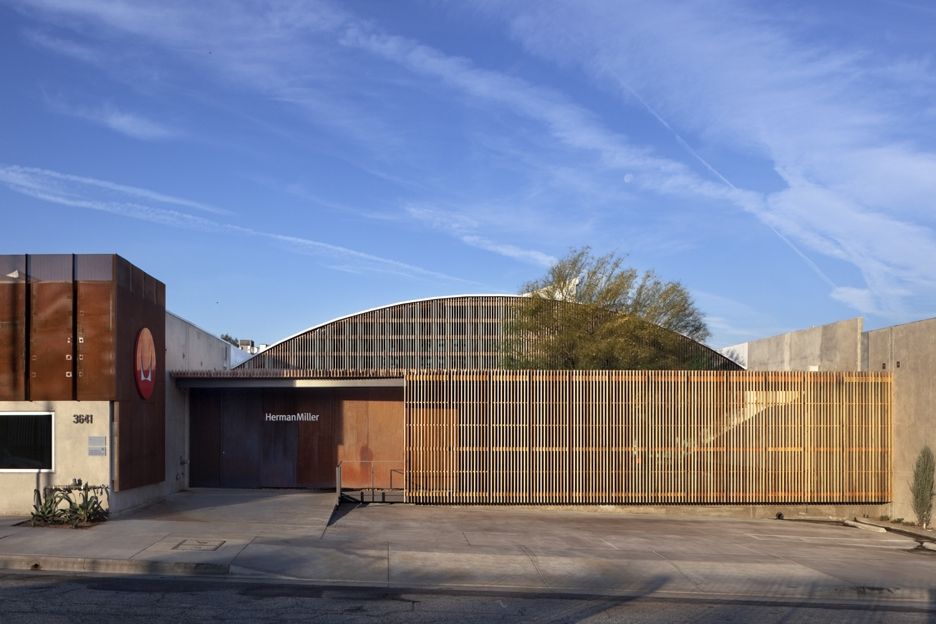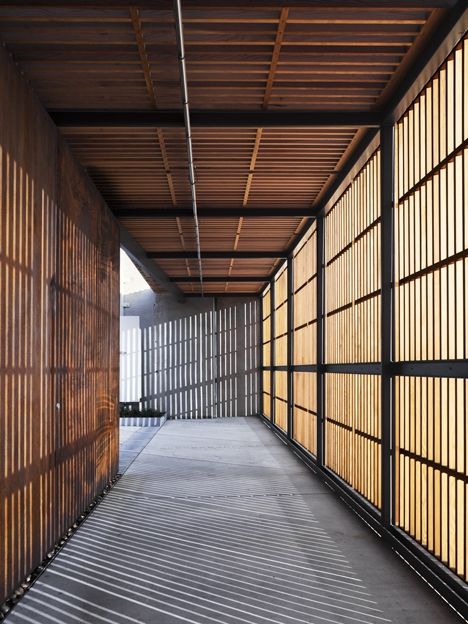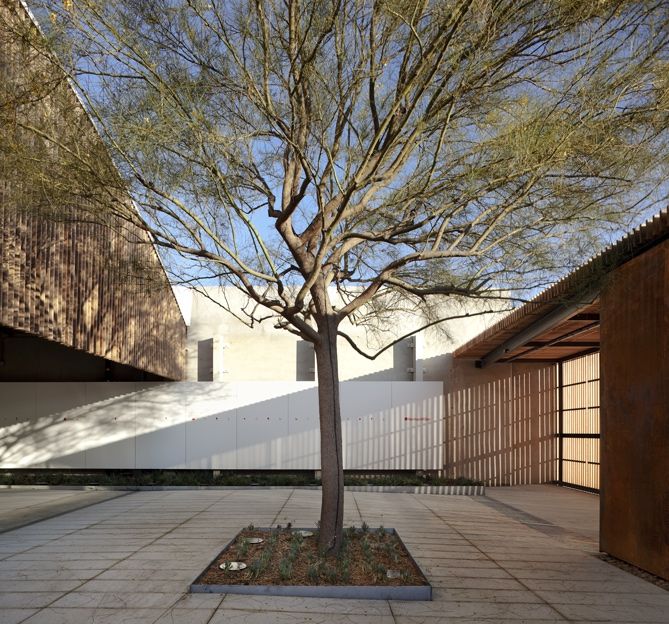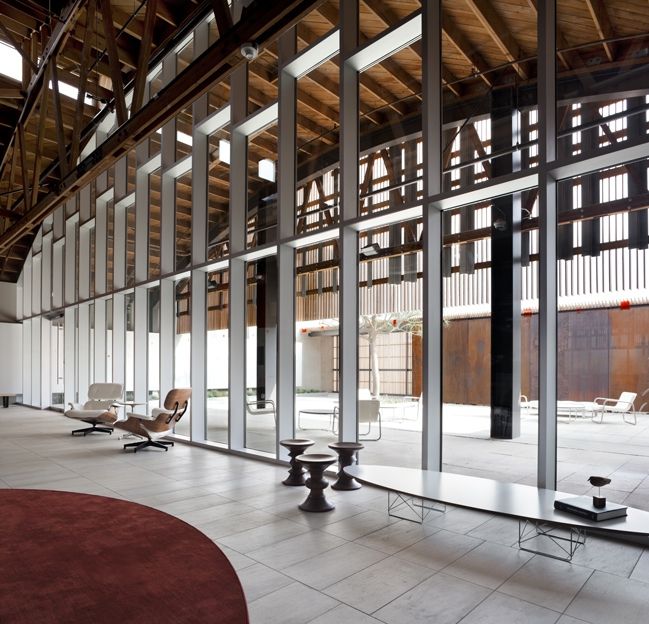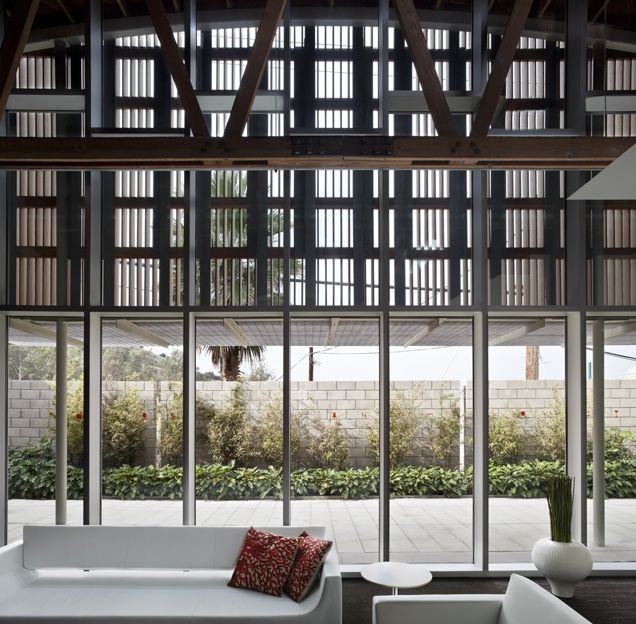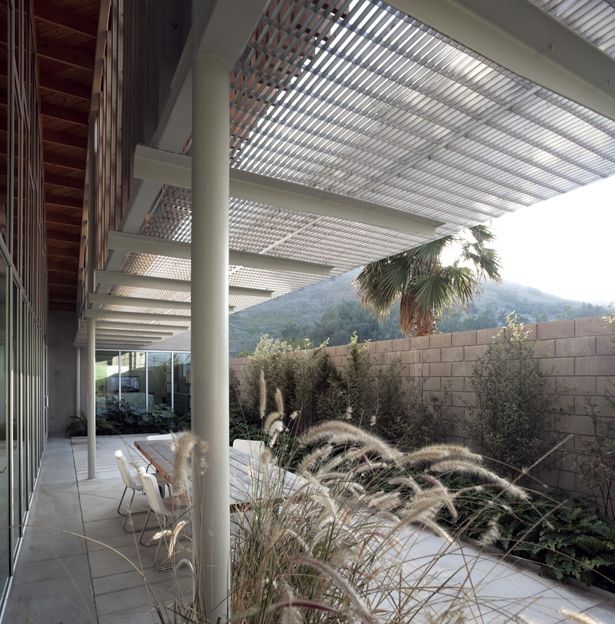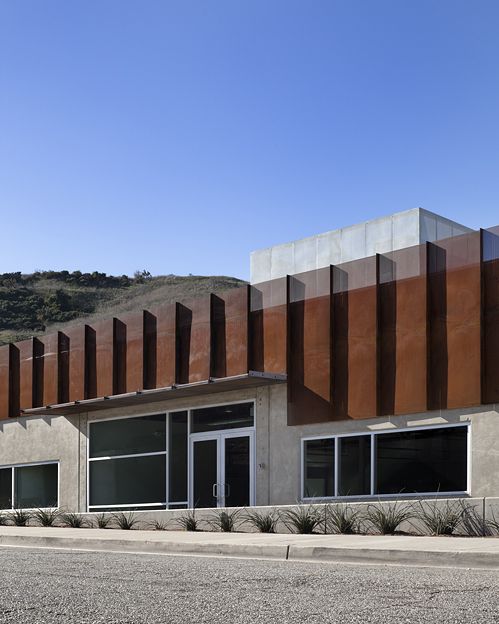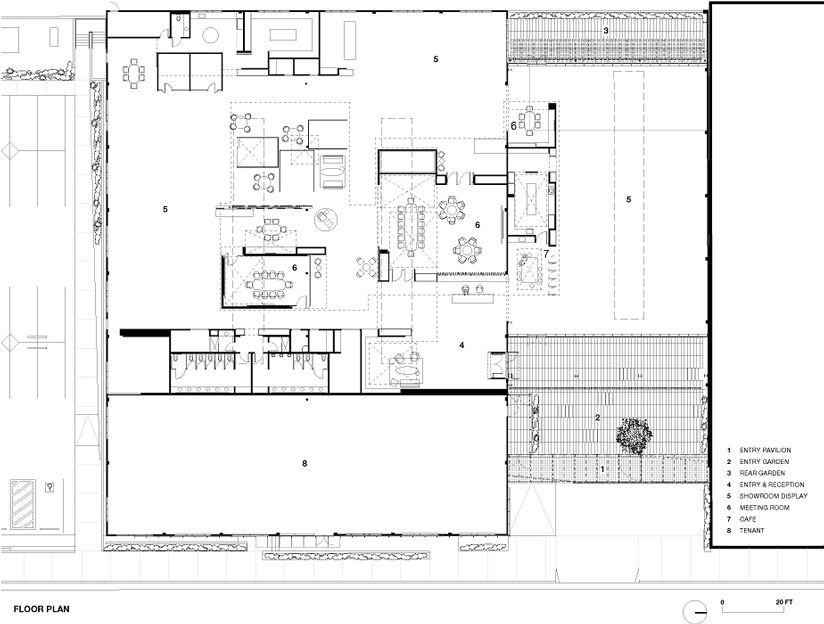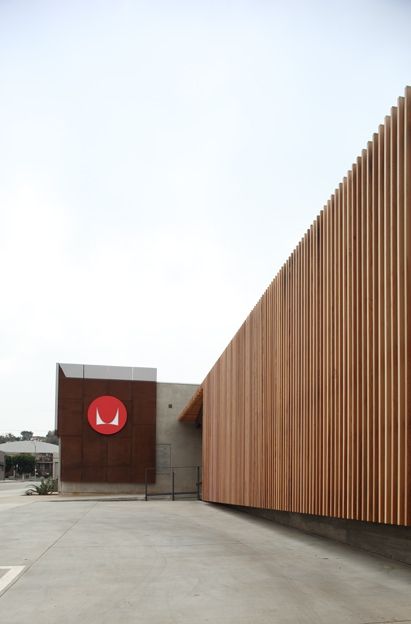Herman Miller Building
This $105/sf renovation on the edge of LA's Culver City transforms three obsolete industrial buildings into state-of-the-art showroom spaces for Herman Miller and another tenant. A primary goal was to provide useable outdoor space in a relatively inhospitable urban environment, both as programmable space and as a buffer to the street and neighboring sites. A third of the existing structure was removed, creating two courtyards and bringing daylight deep into the building through a pair of tall glass walls. A 1980s structure was demolished for further landscaping and on-site parking, and the remaining 28,500 sf building received a full seismic retrofit. Existing materials were stripped and sandblasted to reveal cast concrete panels and the original bow-truss structure with curved plank decking, characteristic of mid-century LA. Wood screens shade each glass wall and portions of the courtyards while bringing the texture and materiality of the interior out to the public realm. A third wood screen forms an entry pavilion, providing a street wall and point of access to the larger courtyard, and standing in contrast with the hard surroundings of this industrial street. Mediating between the finely textured wood elements and the rough concrete walls, corten steel screen clads a portion of the existing building and folds over to shade a tenant entrance. The palette of douglas fir, corten steel and concrete lend the building a warm character, but one at home in its surroundings. Planting with native vegetation links the site to the hillside adjoining the property.
The project received LEED Gold Certification due to a number of progressive design features, from high performance roofing to use of local and recycled-content materials and efficient mechanical systems. But the greenest aspects of this project garner no LEED credit.
Project Team
- Chris Mascari, AIA
- Brandon Pass
- Erik Brotherton, RA
- Nina Reckeweg
- Christopher Connock
- Kristen Alexander
- Michael Gibson
- Mitsuhiro Komatsu
Client
Undisclosed
Location
Los Angeles
Size
31500 sf
Date
2009
Consultants
-
Lighting Workshop
Lighting Designer
-
Rosini Engineering
MEPS Engineer
-
Oltmans Construction Company
General Contractor
-
Howard Building Corporation
General Contractor
-
Van Atta Design
Landscape Architect
-
Zinner Consultants
LEED Engineer
-
Engineering Economics
LEED Commissioning
-
Brummit Energy Associates
Energy Modeling
Awards
2010 AIA California Council Honor Award
2010 AIA New York State Excellence Award
2009 Infill Philadelphia Design Award
2010 AFLA Design Green Honor Award
2010 AIA Los Angeles Citation Award
